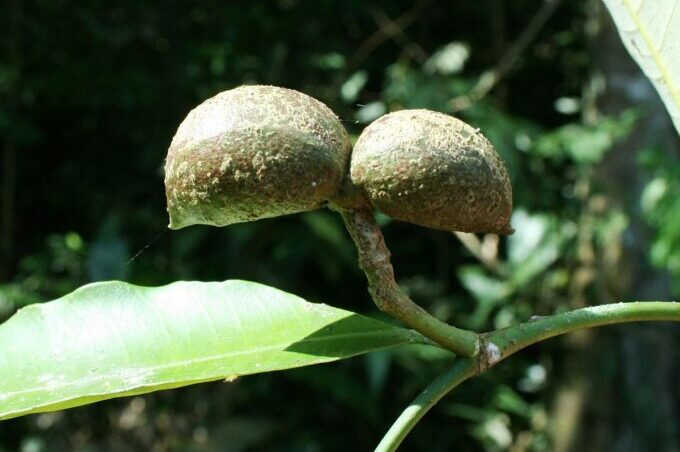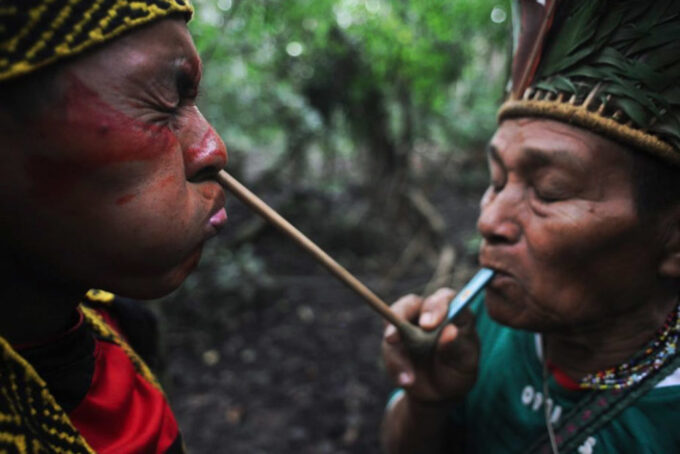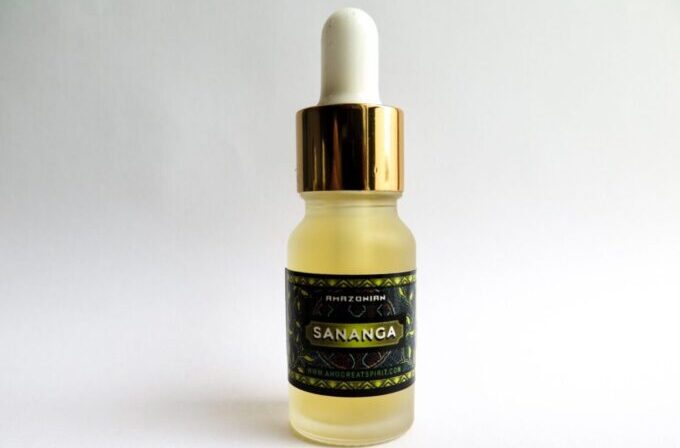Sananga is a traditional medicinal eye drop, deeply rooted in the indigenous cultures of the Amazon basin. This powerful remedy, derived from the roots and bark of the Tabernaemontana undulata shrub, has been an integral part of Amazonian tribal rituals and healing practices for centuries. Its use transcends mere physical healing, as it also plays a pivotal role in spiritual purification and vision enhancement.
Historical Context and Cultural Significance
The use of Sananga can be traced back to the indigenous tribes of the Amazon, including the Matsés and Katukina people. For these tribes, Sananga is not just a medicine; it is a sacred substance that connects them to the spiritual world.
The preparation and administration of Sananga are often accompanied by rituals and prayers, emphasizing its significance beyond the physical realm. This historical context highlights the deep intertwining of Sananga with the cultural and spiritual practices of Amazonian tribes.
Botanical Origins and Preparation

Source: species.wikimedia.org
Sananga is extracted from the Tabernaemontana undulata plant, native to the Amazon rainforest. The process begins with the careful harvesting of the plant’s roots. These roots are then thoroughly cleaned and finely shaved into small pieces. The next step involves mixing these shavings with clean water.
To extract the Sananga, the mixture is then pressed through a mesh bag. Alternatively, Sananga roots can be dried, ground into a powder, and stored for later use. When needed, the powder is mixed with water to create the eyedrops. However, this method tends to produce a weaker solution with less complexity compared to the fresh preparation
Pharmacological Properties
The primary active compounds in Sananga are the alkaloids ibogaine and voacangine. These substances are recognized for their medicinal properties, which are key to the therapeutic effects of Sananga. Current research on these alkaloids indicates they may have potential benefits in various treatments, although their direct role in addiction and depression therapies is not established.
Due to limited scientific studies specifically on Sananga, it remains an area of interest in ethnobotany and pharmacology. This ongoing research aims to better understand its potential medicinal applications and safety profile.
Therapeutic Uses and Effects
Traditionally, Sananga is used to treat a variety of physical and spiritual ailments. Physically, it is known for its ability to improve vision, particularly in enhancing the visual perception necessary for hunting in the dense Amazonian forests.
On a spiritual level, Sananga is believed to cleanse the inner sight, allowing for deeper insight and clarity. Users often report intense burning sensations upon application, followed by a period of heightened sensory awareness and peacefulness.
Contemporary Perspectives and Challenges
In recent years, Sananga has gained attention in the Western world, particularly among those seeking alternative medicines and spiritual experiences. This interest poses both opportunities and challenges.
On one hand, it opens up avenues for cross-cultural understanding and the potential integration of traditional medicines into modern therapeutic practices. On the other, it raises concerns about the sustainability and ethical sourcing of the plant, as well as the potential for cultural appropriation.
The Shamanic Worldview and Sananga

Source: chacruna.net
In the Amazonian shamanic worldview, health and disease are not just physical concepts but are deeply intertwined with spiritual and emotional states. Shamans, who are the traditional healers in these cultures, see Sananga as a tool that bridges the physical and spiritual realms.
They believe that Sananga can clear negative energies, improve spiritual vision, and even protect against malevolent spirits. This holistic understanding of health and healing is central to appreciating the role of Sananga in indigenous communities.
Sananga in Rituals and Ceremonies
Sananga is often used in conjunction with other traditional practices, such as Ayahuasca ceremonies. In these settings, Sananga is not merely a medicinal tool but a spiritual cleanser. It prepares individuals for deeper spiritual experiences, enhancing their openness and receptivity.
The use of Sananga in rituals underscores its role as a facilitator for spiritual journeys and personal transformation, beyond its physical healing properties.
Scientific Research and Potential Benefits
While traditional knowledge about Sananga is extensive, scientific research is still catching up. Preliminary studies have suggested potential benefits such as anti-inflammatory properties and the ability to improve visual perception.
However, comprehensive clinical trials are needed to fully understand its pharmacological effects and therapeutic potential. The scientific exploration of Sananga could lead to new treatments for various conditions, but it must be done with respect for its cultural significance and sustainable practices.
Ethical Considerations and Sustainability
The growing global interest in Sananga raises important ethical and sustainability issues. It is crucial to ensure that the harvesting and use of Tabernaemontana undulata do not harm the Amazonian ecosystems. Additionally, the cultural practices and knowledge of indigenous tribes must be respected and protected.
Ethical sourcing and fair trade practices are essential in ensuring that the benefits of Sananga reach the indigenous communities that have been its custodians for generations.
Integrating Traditional and Modern Medicine

Source: ebay.co.uk
The interest in Sananga also opens up discussions on how traditional medicine can be integrated into modern healthcare practices. This integration requires a respectful and informed approach, recognizing the value of indigenous knowledge while applying scientific rigor.
Collaborations between traditional healers and modern medical practitioners can lead to new insights and more holistic approaches to health and wellness.
Future Directions and Research Opportunities
There is vast potential for future research on Sananga, both in terms of its pharmacological properties and its cultural significance. Understanding how Sananga interacts with the human body and mind could lead to novel treatments for physical and psychological conditions.
Additionally, further exploration of its role in indigenous cultures can contribute to a deeper understanding of holistic health practices and the importance of cultural diversity in medicine.
Final Thoughts
Sananga stands as a remarkable example of the rich medicinal knowledge present in indigenous Amazonian cultures. It challenges us to broaden our understanding of medicine, integrating both the physical and spiritual dimensions of healing.
As the world becomes increasingly interested in traditional practices like Sananga, it is essential to approach them with respect, curiosity, and a commitment to preserving the knowledge and traditions of the indigenous communities at their heart.
The journey of understanding and utilizing Sananga is not just about uncovering a traditional remedy; it is about bridging worlds, respecting diversity, and embracing a more inclusive and holistic view of health and healing.







